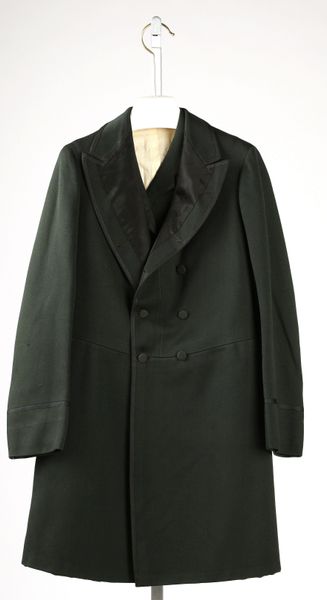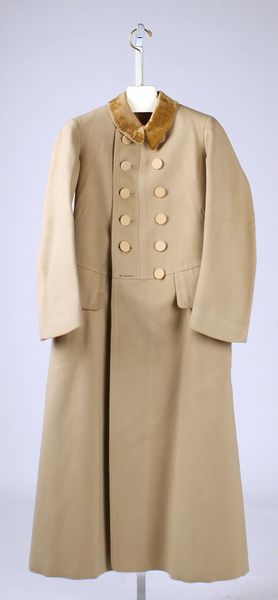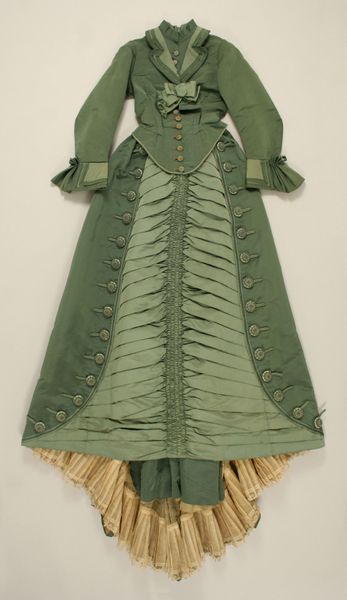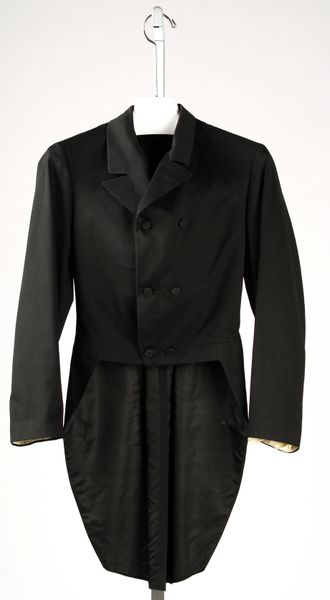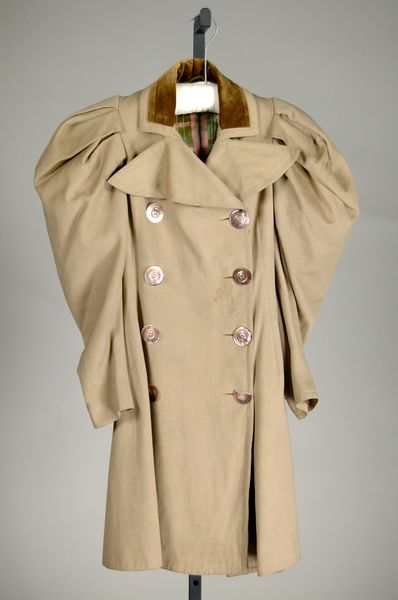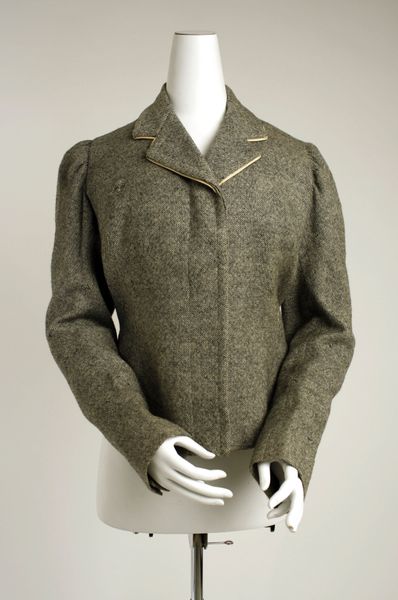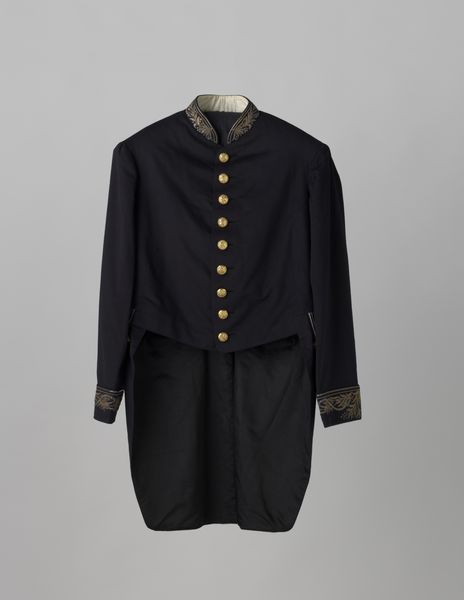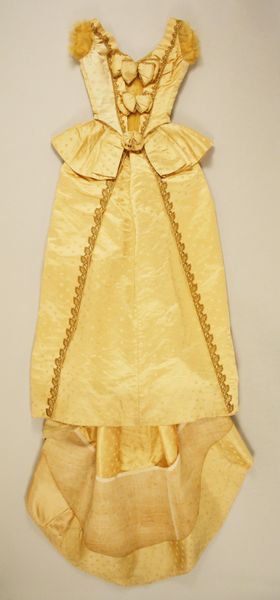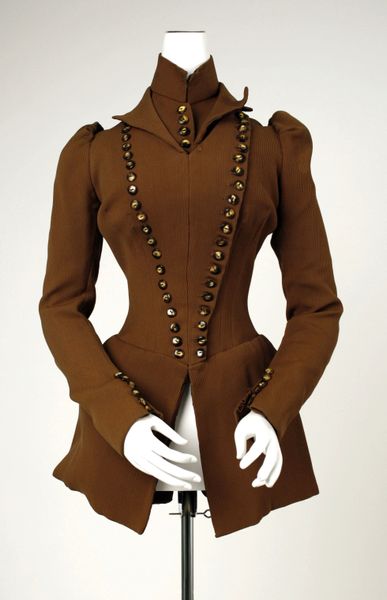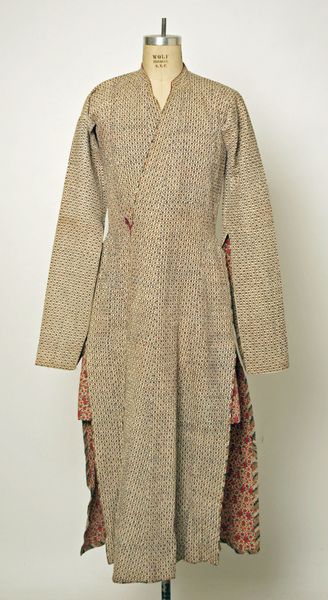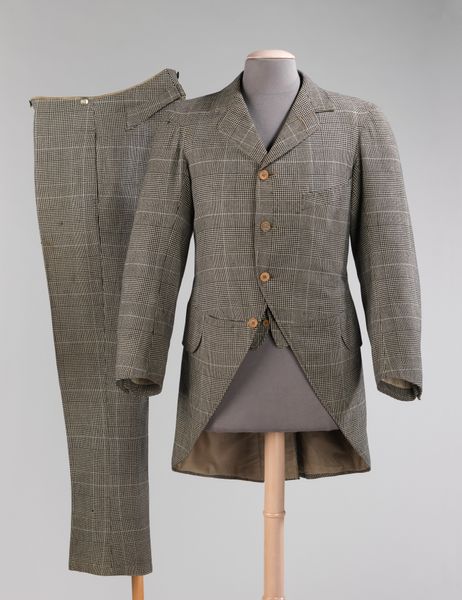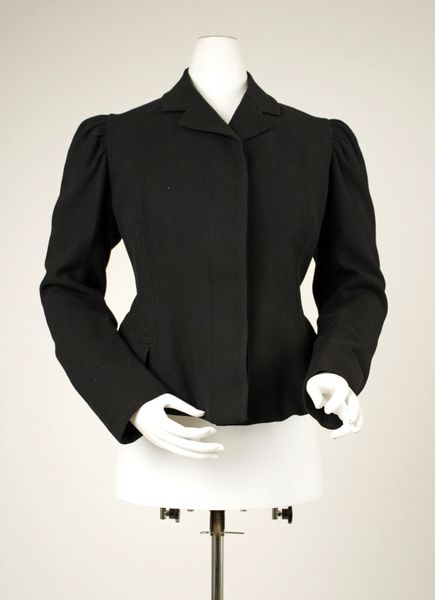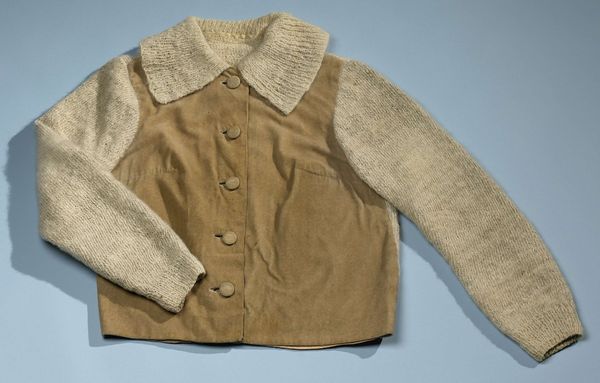
Copyright: Public Domain
Editor: We’re looking at a “Hunting Coat,” crafted sometime between 1850 and 1899 by John Patterson & Co. It's held at the Metropolitan Museum of Art, made from what looks like mixed media, including textiles. The green and yellow are really striking. I'm curious about its construction – how was something like this made in that era? Curator: The coat is indeed fascinating from a materialist perspective. The interplay of textiles reveals much about the socio-economic context. Consider the distinct textures and probable expense of both the durable outer fabric and the silken lining. To whom was labour outsourced in the creation of this coat, and who did it represent? Editor: I see what you mean. Was this an example of "high-end" garment creation even in its own time? I hadn’t really considered the implied hierarchies embedded within the materials. Curator: Absolutely. Think about access to such refined materials. The use of dyes would point towards the cost and processes involved to treat and produce them, and where. Furthermore, the very concept of a designated "hunting coat" signifies a privileged class with leisure time. What can we glean about manufacturing during the mid-19th century in how this was pieced together? Editor: That makes sense. The meticulous tailoring implies a highly skilled labour force, not to mention the specific social activities this coat enabled. Curator: Exactly. This isn’t just clothing; it's a statement. By examining its constituent parts, their origins, and the labor behind its production, we can unveil layers of social meaning encoded within this single garment. A piece of fibre art. Editor: It’s fascinating how a seemingly simple garment reveals such complex networks of production and social meaning when viewed through the lens of materials and labor! Thanks so much for this interpretation.
Comments
No comments
Be the first to comment and join the conversation on the ultimate creative platform.
